Insulin promotes the bone formation capability of human dental pulp stem cells through attenuating the IIS/PI3K/AKT/mTOR pathway axis
- PMID: 39075596
- PMCID: PMC11287875
- DOI: 10.1186/s13287-024-03843-9
Insulin promotes the bone formation capability of human dental pulp stem cells through attenuating the IIS/PI3K/AKT/mTOR pathway axis
Abstract
Background: Insulin has been known to regulate bone metabolism, yet its specific molecular mechanisms during the proliferation and osteogenic differentiation of dental pulp stem cells (DPSCs) remain poorly understood. This study aimed to explore the effects of insulin on the bone formation capability of human DPSCs and to elucidate the underlying mechanisms.
Methods: Cell proliferation was assessed using a CCK-8 assay. Cell phenotype was analyzed by flow cytometry. Colony-forming unit-fibroblast ability and multilineage differentiation potential were evaluated using Toluidine blue, Oil red O, Alizarin red, and Alcian blue staining. Gene and protein expressions were quantified by real-time quantitative polymerase chain reaction and Western blotting, respectively. Bone metabolism and biochemical markers were analyzed using electrochemical luminescence and chemical colorimetry. Cell adhesion and growth on nano-hydroxyapatite/collagen (nHAC) were observed with a scanning electron microscope. Bone regeneration was assessed using micro-CT, fluorescent labeling, immunohistochemical and hematoxylin and eosin staining.
Results: Insulin enhanced the proliferation of human DPSCs as well as promoted mineralized matrix formation in a concentration-dependent manner. 10- 6 M insulin significantly up-regulated osteogenic differentiation-related genes and proteins markedly increased the secretion of bone metabolism and biochemical markers, and obviously stimulated mineralized matrix formation. However, it also significantly inhibited the expression of genes and proteins of receptors and receptor substrates associated with insulin/insulin-like growth factor-1 signaling (IIS) pathway, obviously reduced the expression of the phosphorylated PI3K and the ratios of the phosphorylated PI3K/total PI3K, and notably increased the expression of the total PI3K, phosphorylated AKT, total AKT and mTOR. The inhibitor LY294002 attenuated the responsiveness of 10- 6 M insulin to IIS/PI3K/AKT/mTOR pathway axis, suppressing the promoting effect of insulin on cell proliferation, osteogenic differentiation and bone formation. Implantation of 10- 6 M insulin treated DPSCs into the backs of severe combined immunodeficient mice and the rabbit jawbone defects resulted in enhanced bone formation.
Conclusions: Insulin induces insulin resistance in human DPSCs and effectively promotes their proliferation, osteogenic differentiation and bone formation capability through gradually inducing the down-regulation of IIS/PI3K/AKT/mTOR pathway axis under insulin resistant states.
Keywords: Bone regeneration; Human dental pulp stem cells; Insulin; Insulin/insulin-like growth factor-1 signaling (IIS) pathway; PI3K/AKT/mTOR pathway.
© 2024. The Author(s).
Conflict of interest statement
The authors declare that there are no conflicts of interest.
Figures
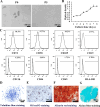
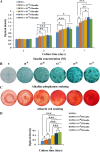


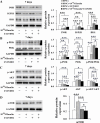
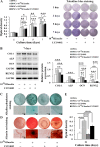


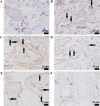
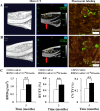
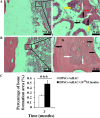

Similar articles
-
Kaempferol combats the osteogenic differentiation damage of periodontal ligament stem cells in periodontitis via regulating EphrinB2-mediated PI3K/Akt and P38 pathways.Phytomedicine. 2025 Jun;141:156733. doi: 10.1016/j.phymed.2025.156733. Epub 2025 Apr 6. Phytomedicine. 2025. PMID: 40220409
-
Astragaloside IV Promotes Osteogenic Differentiation of Periodontal Ligament Stem Cells via Activating PI3K/AKT/eNOS/NO Signaling Pathway: In vitro and in vivo Study.Drug Des Devel Ther. 2025 Jul 16;19:6073-6088. doi: 10.2147/DDDT.S514682. eCollection 2025. Drug Des Devel Ther. 2025. PMID: 40687900 Free PMC article.
-
A new discovery: Total Bupleurum saponin extracts can inhibit the proliferation and induce apoptosis of colon cancer cells by regulating the PI3K/Akt/mTOR pathway.J Ethnopharmacol. 2022 Jan 30;283:114742. doi: 10.1016/j.jep.2021.114742. Epub 2021 Oct 13. J Ethnopharmacol. 2022. PMID: 34655668
-
Activation of the PI3K/mTOR/AKT pathway and survival in solid tumors: systematic review and meta-analysis.PLoS One. 2014 Apr 28;9(4):e95219. doi: 10.1371/journal.pone.0095219. eCollection 2014. PLoS One. 2014. PMID: 24777052 Free PMC article.
-
The effects of ketone bodies and ketogenesis on the PI3K/AKT/mTOR signaling pathway: A systematic review.Nutr Res. 2025 Jul;139:16-49. doi: 10.1016/j.nutres.2025.04.010. Epub 2025 Apr 22. Nutr Res. 2025. PMID: 40381609
Cited by
-
Iron dysregulation, ferroptosis, and oxidative stress in diabetic osteoporosis: Mechanisms, bone metabolism disruption, and therapeutic strategies.World J Diabetes. 2025 Jun 15;16(6):106720. doi: 10.4239/wjd.v16.i6.106720. World J Diabetes. 2025. PMID: 40548284 Free PMC article. Review.
-
Self-reinforced piezoelectric chip for scaffold-free repair of critical-sized bone defects.Nat Commun. 2025 Jul 1;16(1):5800. doi: 10.1038/s41467-025-61243-w. Nat Commun. 2025. PMID: 40593819 Free PMC article.
-
SNPs in GPCR Genes and Impaired Osteogenic Potency in Osteoporotic Patient Lines-Based Study.Int J Mol Sci. 2024 Dec 19;25(24):13594. doi: 10.3390/ijms252413594. Int J Mol Sci. 2024. PMID: 39769358 Free PMC article.
References
-
- Ahn JJ, Shin HI. Bone tissue formation in extraction sockets from sites with advanced periodontal disease: a histomorphometric study in humans. Int J Oral Maxillofac Implants. 2008;23:1133–8. - PubMed
-
- Li Q, Wang H, Liu L, Weng Y, Xu S, Li L, Wang Z. Suppression of the NLRP3 inflammasome through activation of the transient receptor potential channel melastatin 2 promotes osteogenesis in tooth extraction sockets of periodontitis. Am J Pathol. 2023;193:213–32. 10.1016/j.ajpath.2022.10.009 - DOI - PubMed
Publication types
MeSH terms
Substances
Grants and funding
LinkOut - more resources
Full Text Sources
Medical
Miscellaneous

